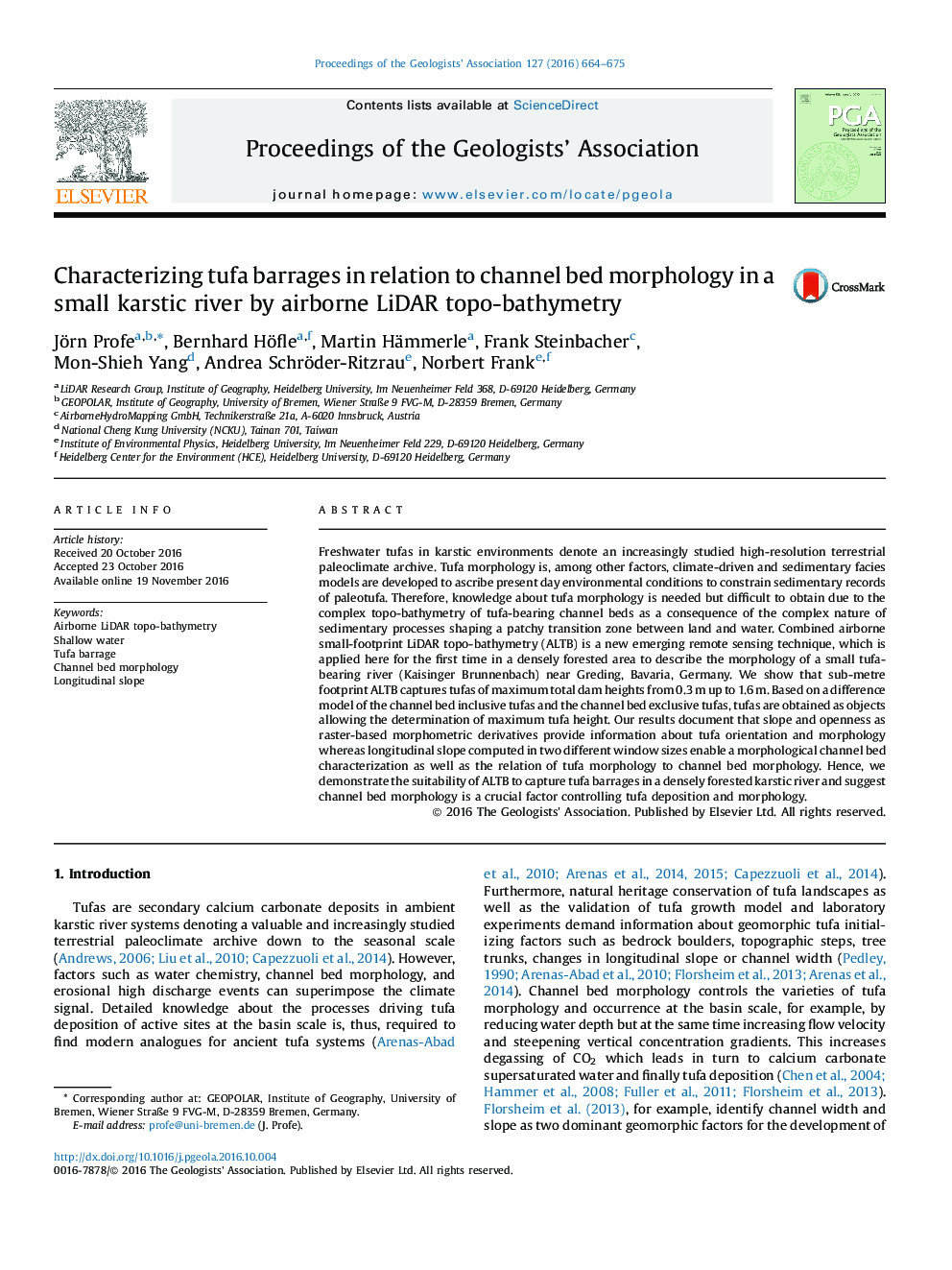| Article ID | Journal | Published Year | Pages | File Type |
|---|---|---|---|---|
| 5786453 | Proceedings of the Geologists' Association | 2016 | 12 Pages |
Freshwater tufas in karstic environments denote an increasingly studied high-resolution terrestrial paleoclimate archive. Tufa morphology is, among other factors, climate-driven and sedimentary facies models are developed to ascribe present day environmental conditions to constrain sedimentary records of paleotufa. Therefore, knowledge about tufa morphology is needed but difficult to obtain due to the complex topo-bathymetry of tufa-bearing channel beds as a consequence of the complex nature of sedimentary processes shaping a patchy transition zone between land and water. Combined airborne small-footprint LiDAR topo-bathymetry (ALTB) is a new emerging remote sensing technique, which is applied here for the first time in a densely forested area to describe the morphology of a small tufa-bearing river (Kaisinger Brunnenbach) near Greding, Bavaria, Germany. We show that sub-metre footprint ALTB captures tufas of maximum total dam heights from 0.3Â m up to 1.6Â m. Based on a difference model of the channel bed inclusive tufas and the channel bed exclusive tufas, tufas are obtained as objects allowing the determination of maximum tufa height. Our results document that slope and openness as raster-based morphometric derivatives provide information about tufa orientation and morphology whereas longitudinal slope computed in two different window sizes enable a morphological channel bed characterization as well as the relation of tufa morphology to channel bed morphology. Hence, we demonstrate the suitability of ALTB to capture tufa barrages in a densely forested karstic river and suggest channel bed morphology is a crucial factor controlling tufa deposition and morphology.
